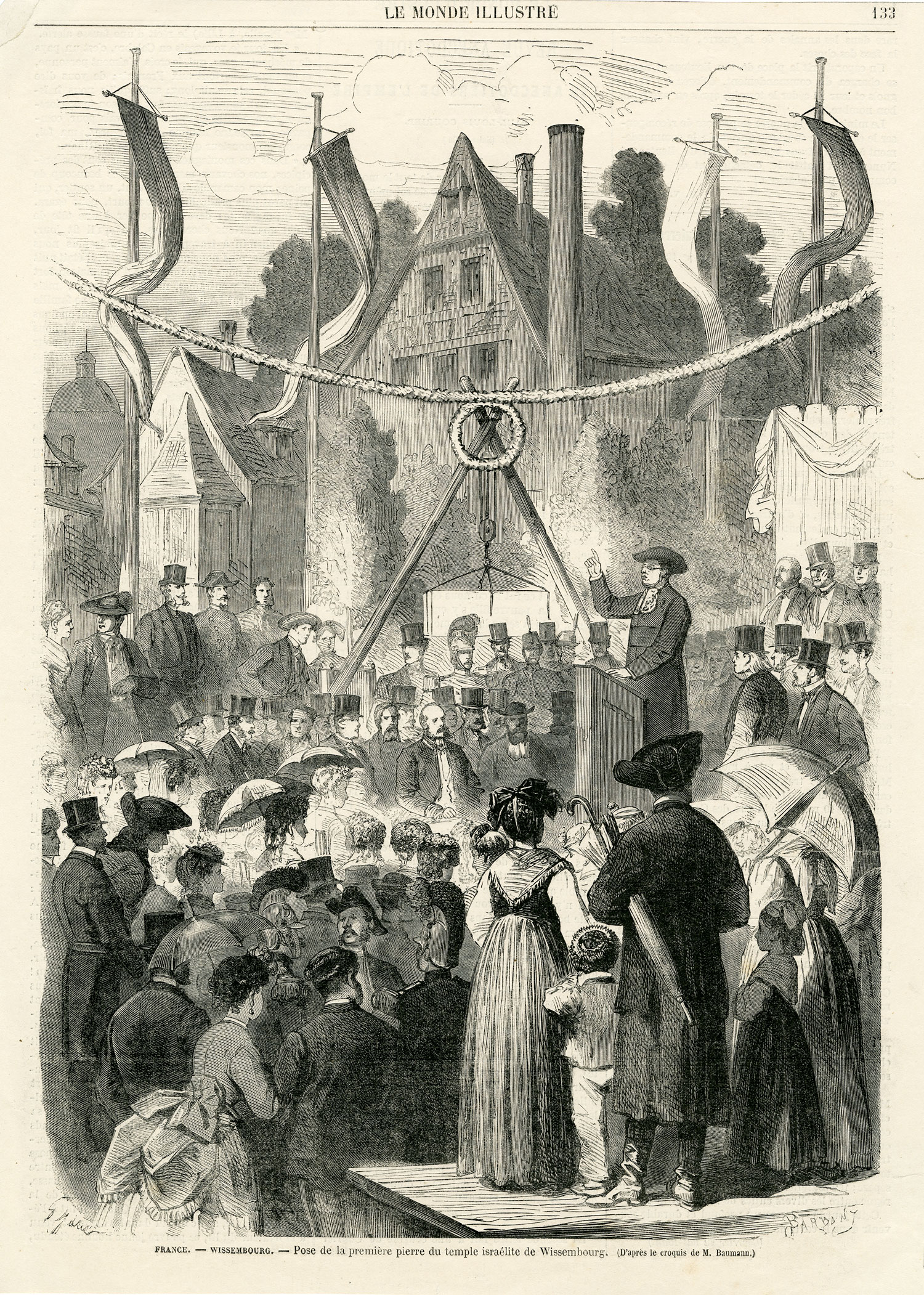Published in Le Monde illustré, this wood engraving portrays the crowd assembled on August 15, 1869, for the laying of the foundation stone for the synagogue in the Alsatian town of Wissembourg, France. The new synagogue was to replace a smaller one built in 1805, shortly after the emancipation of French Jews, when the building of synagogues was legalized. The large Romanesque-style structure was destroyed in World War II, but a third building was erected on the site in the 1960s.
By the 1860s, scores of synagogues had been built in France, and their erection had become a state enterprise. State architects and officials helped design and construct new houses of worship and actively participated in milestone celebrations. The article notes that the Grand Rabbi of France, Lazare Isidor (1813–1888), thanked the sub-prefect, mayor, and municipal council members for their support in obtaining such a worthy synagogue. Isidor expressed his pleasure in seeing the “perfect understanding” existing among the various religions in the community. It is not surprising that he expressed gratitude on behalf of the Jewish community for state support and involvement; the rabbi himself was a state official. Not all Jews in France were keen on sacrificing traditional self-governance in communal religious affairs in exchange for full rights as Frenchmen, but by the mid-19th century, the transition of the Jewish nation to a Jewish religion of the French nation was mostly successful and complete.
